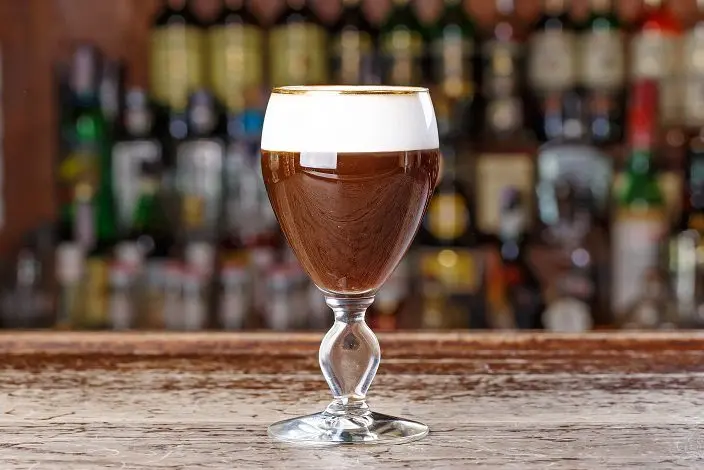East Flanders historical style. Traditionally – aged beer with very high acidity, modern examples are less acidic, but more malty, aged not in oak barrels, but in stainless steel containers.
Some varieties are sold “single malt”, while others are blended from batches of different ages. Sometimes fruit lambics are made based on this style.
It has a complex aroma with a bright malt profile, manifested by tones of chocolate, creamy toffee, citruses, caramel. Esters give notes of dried fruits, black cherries, figs. Spicy phenols are allowed. As the beer ages, it begins to resemble sherry a bit. Sourness is necessarily present, but it should not turn into “vinegar”. Hops do not show up in the aroma.
The bouquet is malty-fruity, with an unobtrusive bitterness. The finish is sweet and sour.
Flemish brown ale has a rich chestnut color, in the glass forms a moderately persistent head. The tongue may feel medium or full-bodied, does not knit, there are no tart nuances. The style does not belong to the category of effervescent drinks, low-to-moderate carbonation.
The basis of the grist is pils, the drink acquires a characteristic color due to a fraction of caramel, black or roasted malts. Some growers also use corn. Hops require continental, fermentation occurs with the help of yeast and lactobacilli. The original Flemish brown ale is made using local water, which is characterized by a high content of carbonates.
It differs from its eastern counterpart, the Flemish red ale, by having a more pronounced malt profile and less acidity.

Strength: 4.0-8.0%.
Density: initial 1.040-1.074, final 1.008-1.012.
Bitterness Index: 20-25 IBU.
Color: 15-22 SRM.









